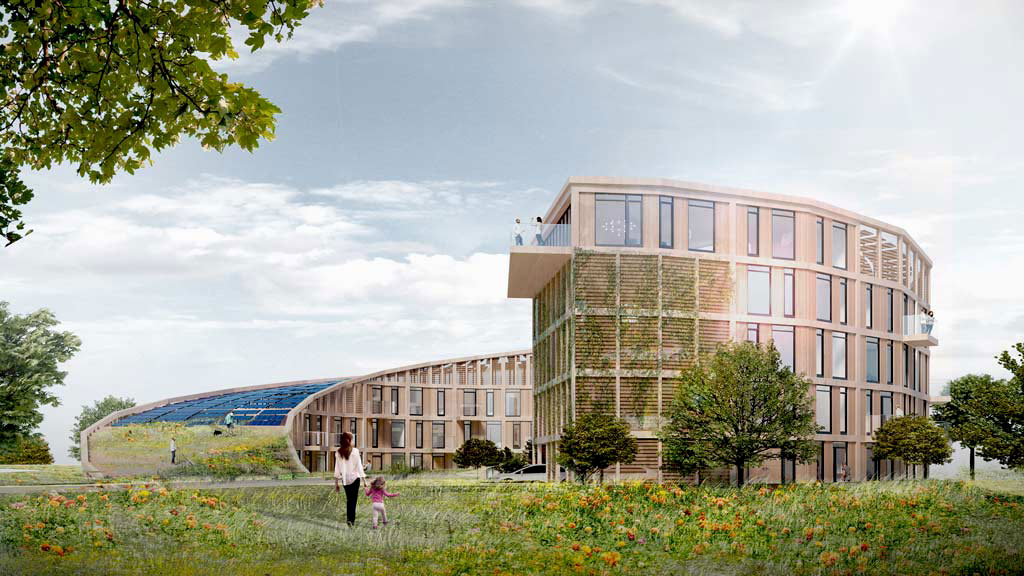Climate change poses massive challenges to building developers and designers, but also presents many opportunities to those willing to make the necessary changes to adapt to a low carbon world.
These are some of the takeaways from a recent report titled Climate Action Through Design by Gensler, a global integrated architecture, design, planning and consulting firm.
“Occupants and building owners are beginning to value the benefits of spaces and structures that are both sustainable and resilient — that use less energy, are built with healthier materials, and can adapt to severe weather events,” wrote Diane Hoskins and Andy Cohen, co-CEOs of Gensler, in the report. “They are driving market demand for sustainable and resilient buildings so much that we are reaching a point at which places and products that don’t achieve design-resilience are at risk of becoming obsolete or devalued — and the bar will keep getting higher.”
The executives added that in the coming years, buildings that have not adapted to these changes will be considered “uninsurable, unfinanceable, and unoccupiable.”
Lasting for a lifetime
According to the paper, 72 per cent of the building sector’s greenhouse gas emissions come from building operation, making it the largest area for improvement. The report offered 10 steps to working towards achieving net-zero energy status, including:
- understand your building’s energy profile;
- create an energy budget;
- orient your building to the local climate;
- use building energy modelling to craft a better envelope;
- design for self shading on the exterior;
- incorporate daylight into the design;
- consider outdoor programming;
- boost natural ventilation;
- cut down plug loads; and
- prioritize whole systems over localized solutions.
The report noted thanks to the increased affordability of renewable energy sources, like photovoltaics, the number of net zero buildings has been rising globally.
Better building blocks
Gensler believes the industry must focus on low-impact, low-carbon materials when constructing new buildings. The reported stated that harvesting, manufacturing and transporting raw construction materials accounts for 11 per cent of global emissions and one quarter of yearly building sector emissions.
The impact of materials can be measured using global warming potential.
“Generally speaking, the longer that materials are used in buildings, the better,” reads the report. “Furniture and interior finishes tend to be replaced every few years, while structural elements can last as long as the building itself.”
Gensler noted products like mass timber show promise as a low-carbon alternative to steel and concrete.
Adjusting to changing climates
As water levels rise and temperatures increase, the built environment will have to adapt. The latest estimates show that $135 billion in commercial and residential real estate nationwide are under threat of being compromised by 2045 due to rising sea levels.
And buildings made from heat trapping materials like concrete and asphalt will perform poorly. Climate change is also causing more extreme weather that has the potential to damage buildings.
Gensler suggests deploying roofs with vegetation to prevent runoff, collecting rainwater to lower water usage, adding envelope-mounted sun screens to provide shade, landscaping with native plants and replacing asphalt and concrete with permeable pavers.
Brand new isn’t always better
Gensler also explained that it isn’t just about building new structures better.
“Far and away the best way to reduce carbon is to reuse existing buildings,” said Juliette Morgan, head of sustainable development for British Land, in the report. “By recycling structure, we can save up to 40 per cent of emissions. These targets are achievable now.”
The report added that adaptive reuse is also far cheaper than demolition and building from scratch.
Property owners can also reap the many municipal benefits that come from converting properties.
Gensler noted that adaptive reuse can happen at a product level, interior level, building level and city level.
Its researchers advised designing for disassembly, choosing materials that are low-carbon and easy to reuse, designing spaces to be easily repurposed for other uses and connecting with community partners to find historic, social and cultural reasons to reuse buildings.
Follow the author on Twitter @RussellReports.











Recent Comments
comments for this post are closed